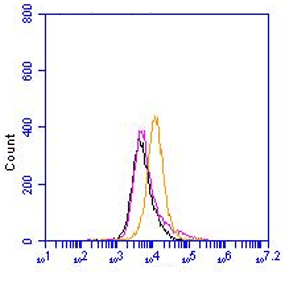C4d, Rat, pAb
€133.00 – €456.00
The polyclonal antibody recognizes rat C4d. Complement factor C4 (MW 41 kDa), formerly known as Gg protein, consists of an alpha-, beta- and gamma-chain. The classical pathway of complement and the mannose binding lectin (MBL) activation pathway converge at C4. Activated, MASP-1 and MASP-2 cleave C4 resulting in the formation of C4a and C4b. The latter can be cleaved by factor I resulting in C4c and C4d, in which step all functional sites are lost. The C4d activation fragment of C4 is an excellent marker for classical complement pathway and MBL pathway activation.
The thioester formed between the side chains of Cys1010 and Gln1013 within the C4d region of the α-chain mediates covalent attachment to the target surface bearing activated forms of C1s or MASP. Furthermore, C4d is highly homologous to C3d with over 35% shared amino acid sequence. In a number of diseases such as rheumatoid arthritis (RA), hereditary angioedema (HAE), systemic lupus erythematosus (SLE) and chronic urticaria with hypercomplementemia levels of C4d are significantly elevated in serum or plasma.
C4d levels may also be elevated in plasma from patients with a variety of humoral autoimmune diseases in which complement activation is known to occur. Deposition of C4d in peritubular capillaries has been shown to be a sensitive marker for antibody-mediated (humoral) rejection in renal transplant biopsies.











